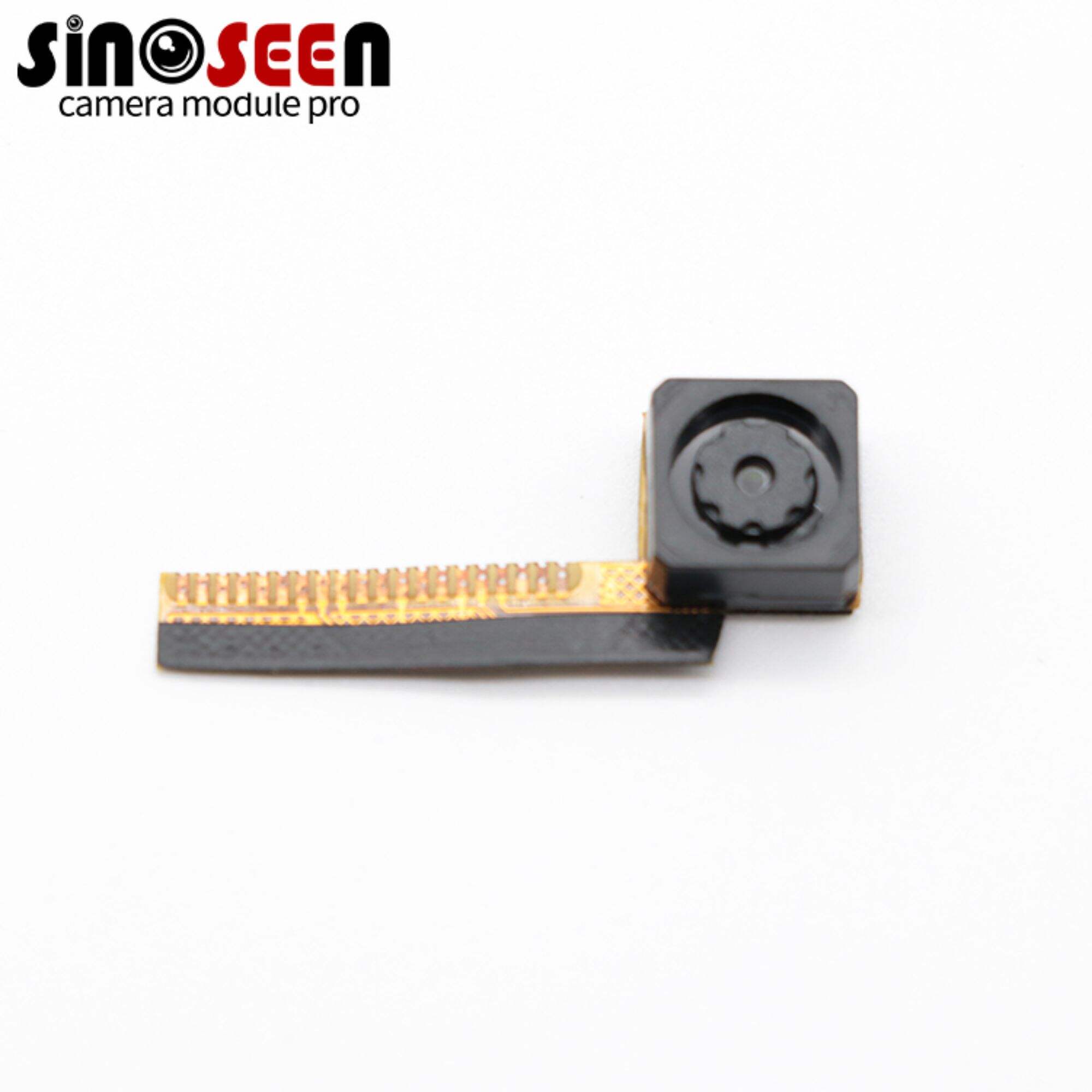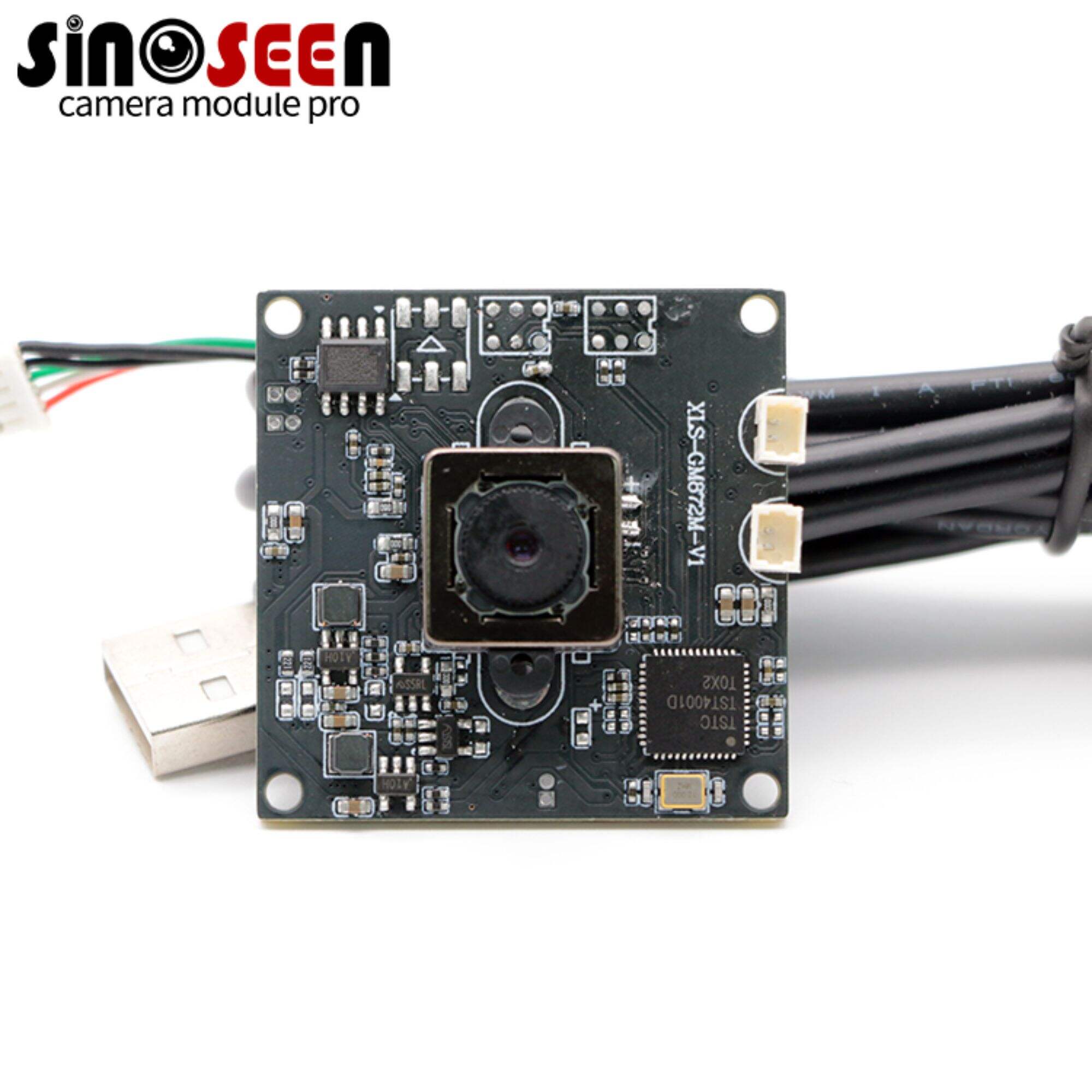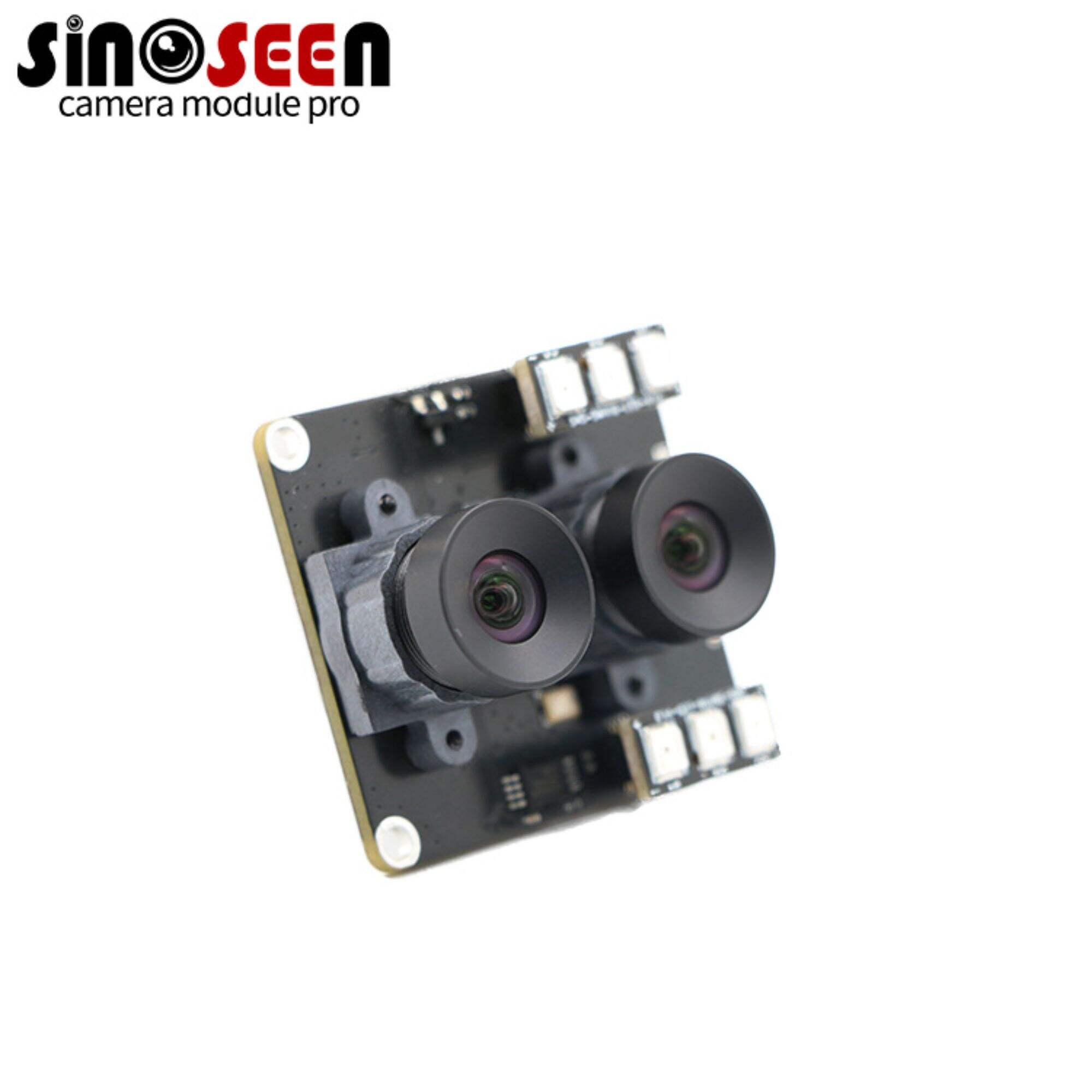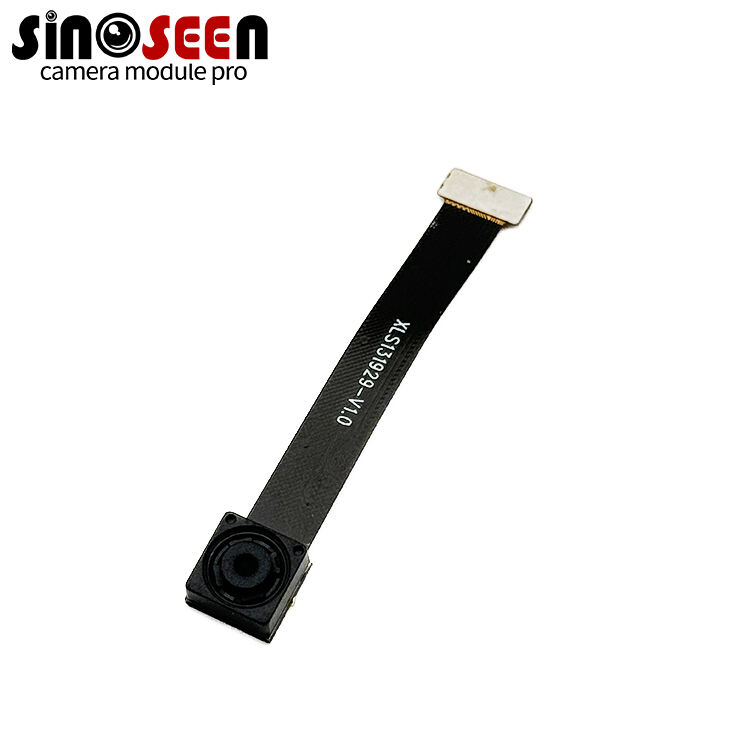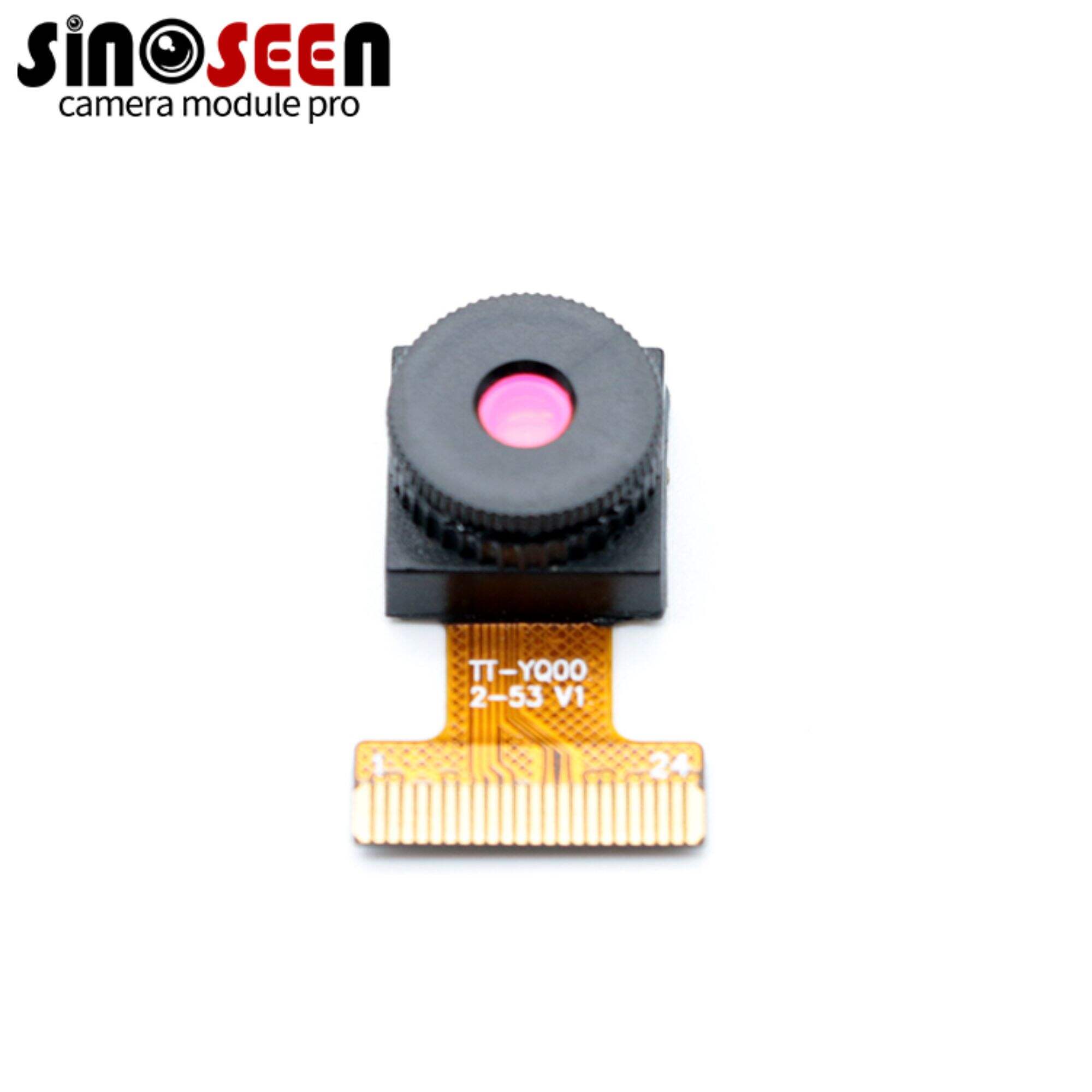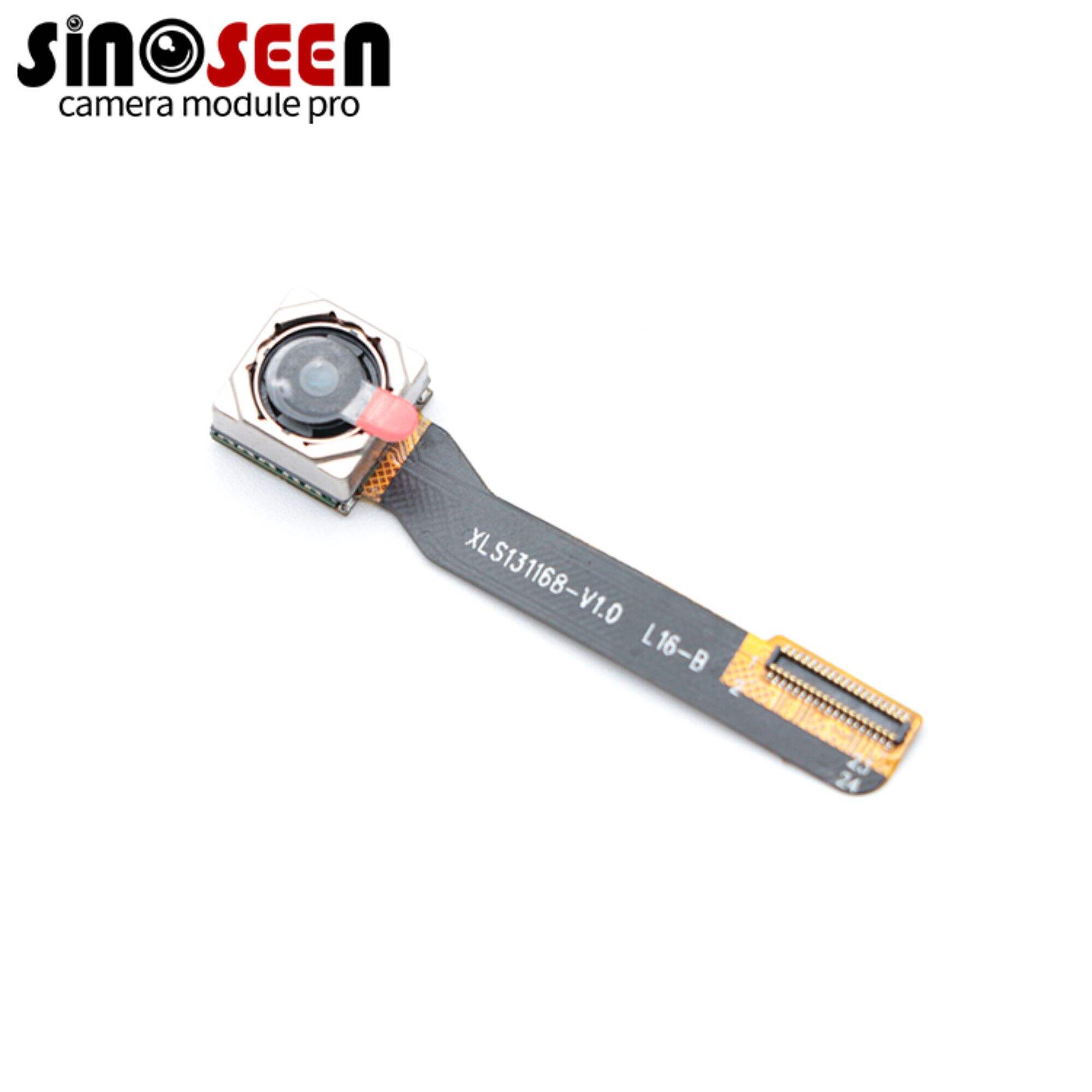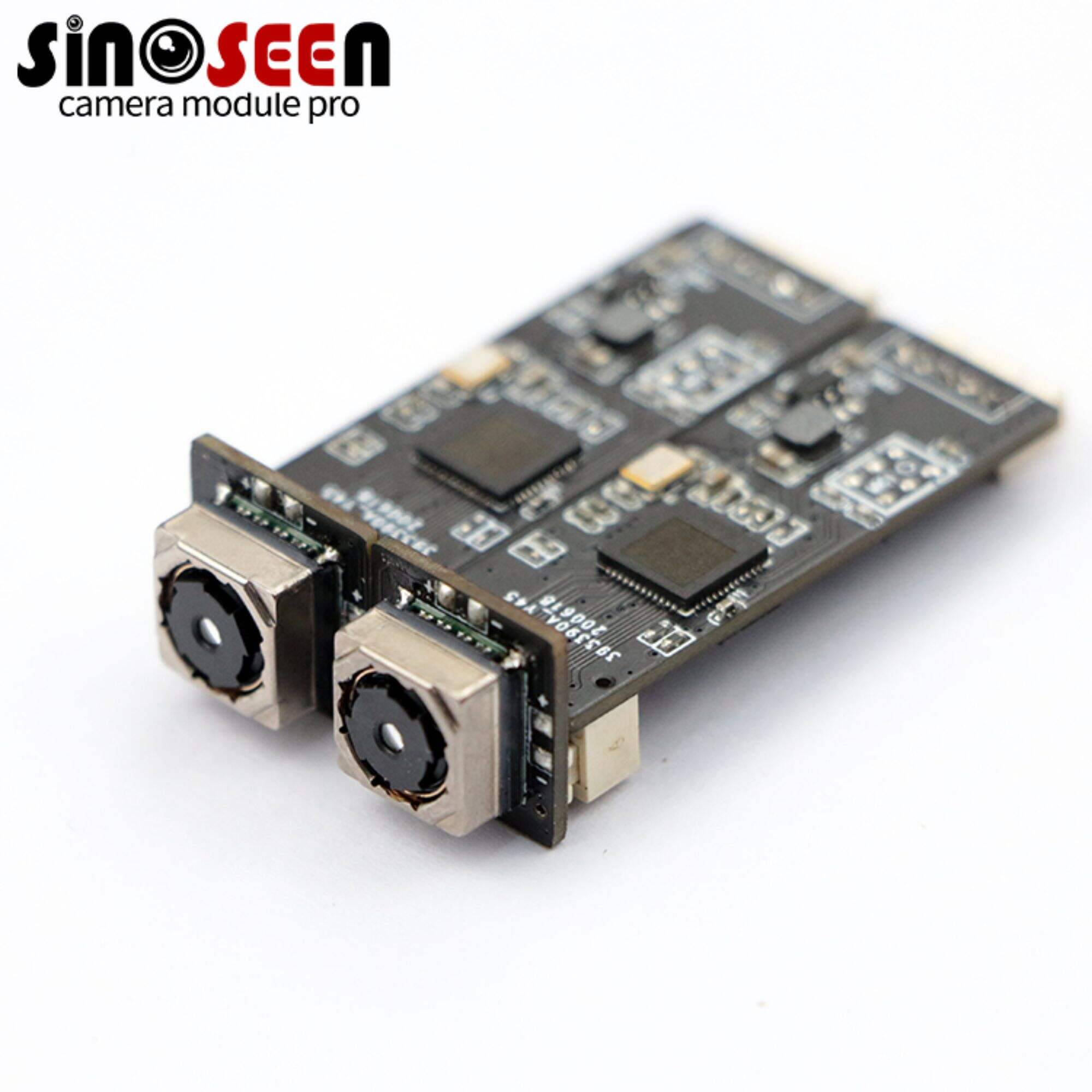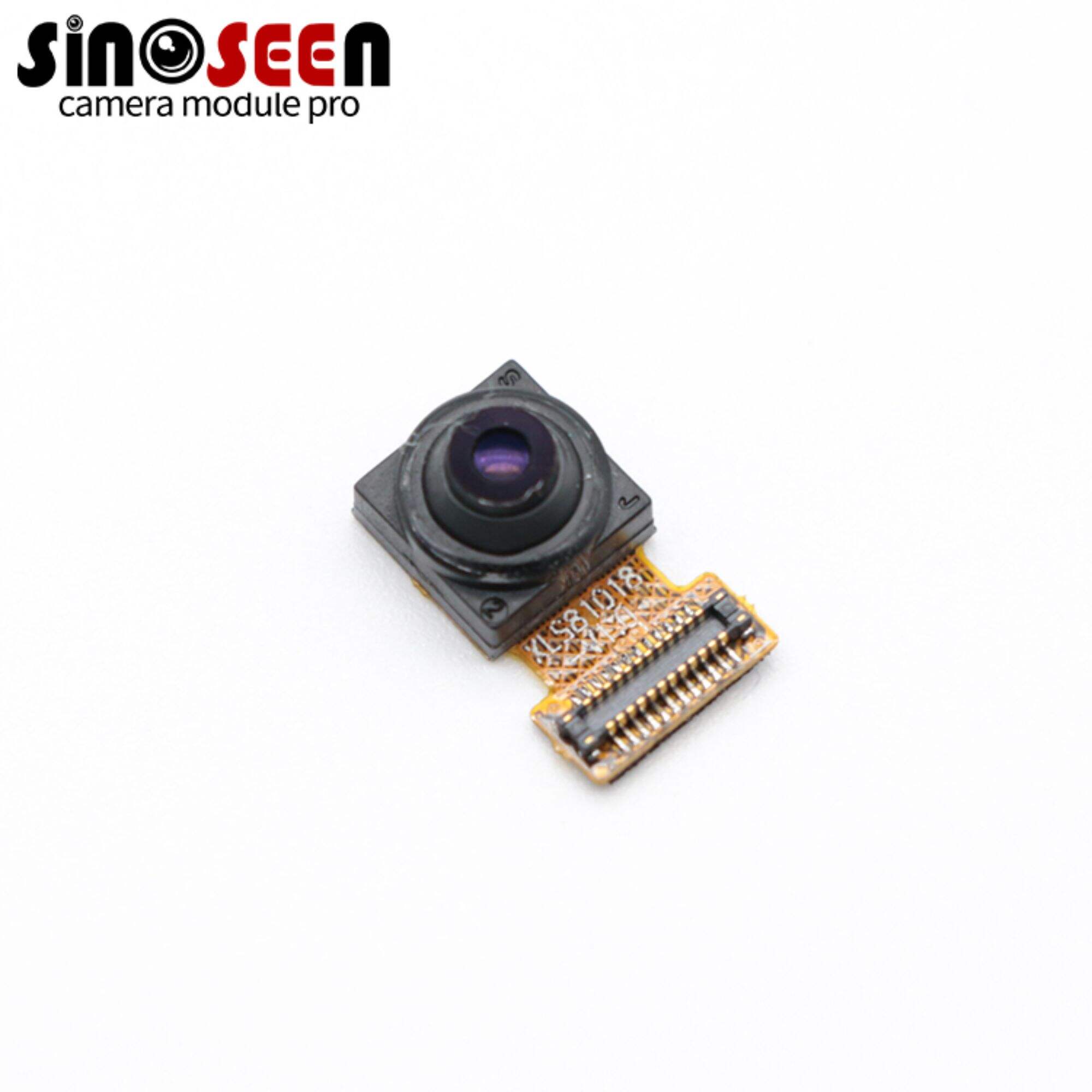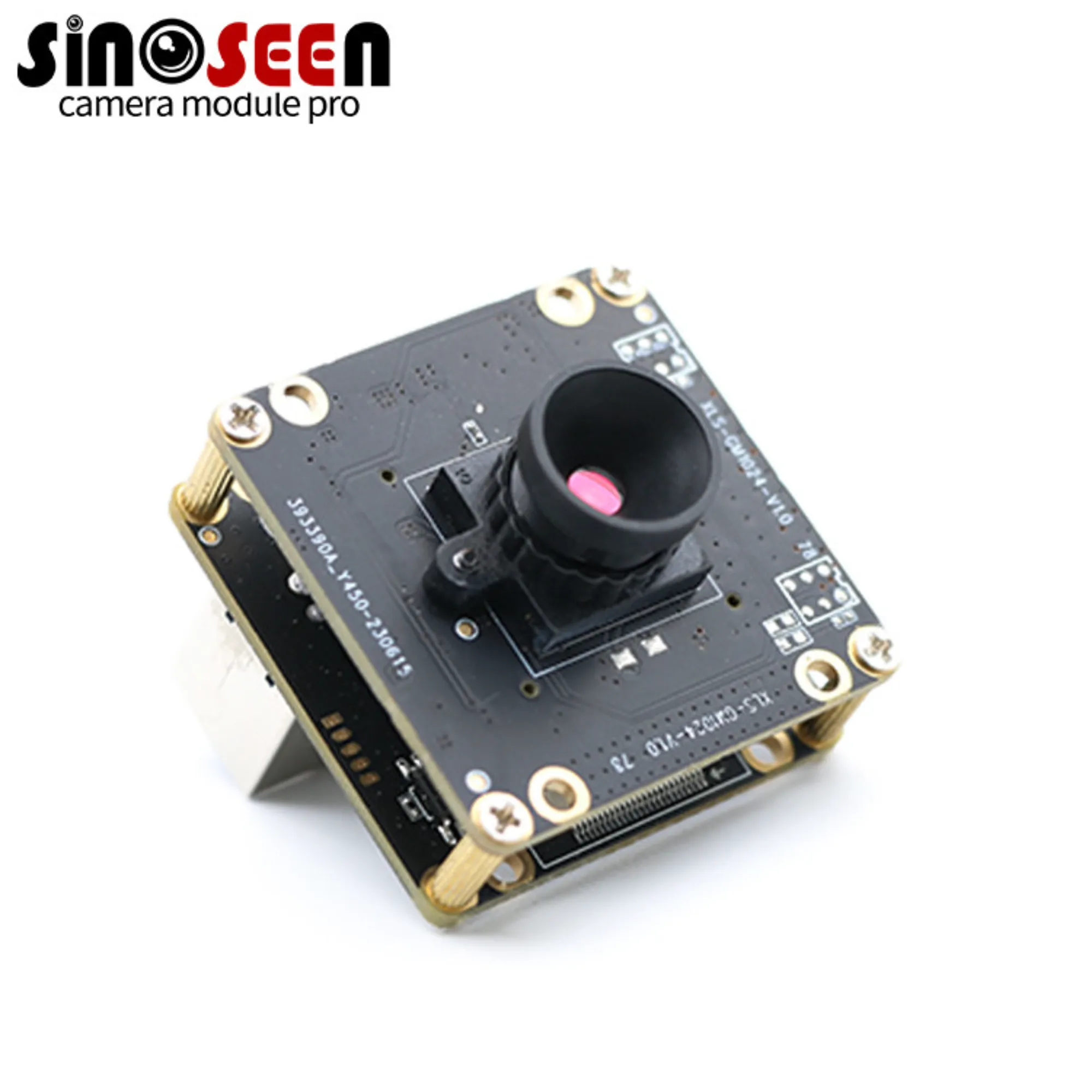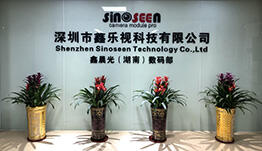GMSL2 vs. Ethernet Camera module: Isang Komprehensibong Pagsusuri
Ang lumalagong pangangailangan ngayon para sa mataas na bilis ng paghahatid ng data, suporta sa mahabang distansya, integridad ng data at mataas na kalidad ng imahe sa industriya, pagsubaybay at automation ay gumagawa ng pagpili ng tamang teknolohiya ng camera ay lalong mahalaga. At sa lahat ng umiiral na teknolohiya sa merkado, ang mga GMSL2 (Gigabit Multimedia Serial Link) camera module at Ethernet camera module ay nakatayo sa pamamagitan ng kanilang natatanging mga pakinabang at mga sitwasyon ng aplikasyon. Sa artikulong ito, titingnan natin ang detalyadong paghahambing ng dalawang teknolohiyang ito - GMSL2 Camera at Ethernet Camera - at suriin ang kanilang mga pagkakaiba sa mga tuntunin ng distansya ng paghahatid, bilis ng paglipat ng data, EMI / EMC performance, at pagiging epektibo sa gastos upang matulungan ang mga propesyonal sa industriya at
Ano ang isang GMSL2 camera?
Ang teknolohiya ng imager ng GMSL2, ang ikalawang henerasyon ng Gigabit Multimedia Serial Link, ay isang mataas na bilis na serial interface na kumonekta sa pamamagitan ng Shielded Twisted Pair (STP) na mga cable o Shielded Parallel Pair (SPP) na mga cable upang magbigay ng isang mataas na mahusay na Sa gitna ng Teknolohiya ng GMSL2 ay ang kakayahang magpadala ng mataas na bilis ng video, bidirectional control data at kapangyarihan sa isang solong coaxial cable, na nagbibigay-daan sa mga bilis ng paglipat ng data ng hanggang 6Gbps bawat channel.
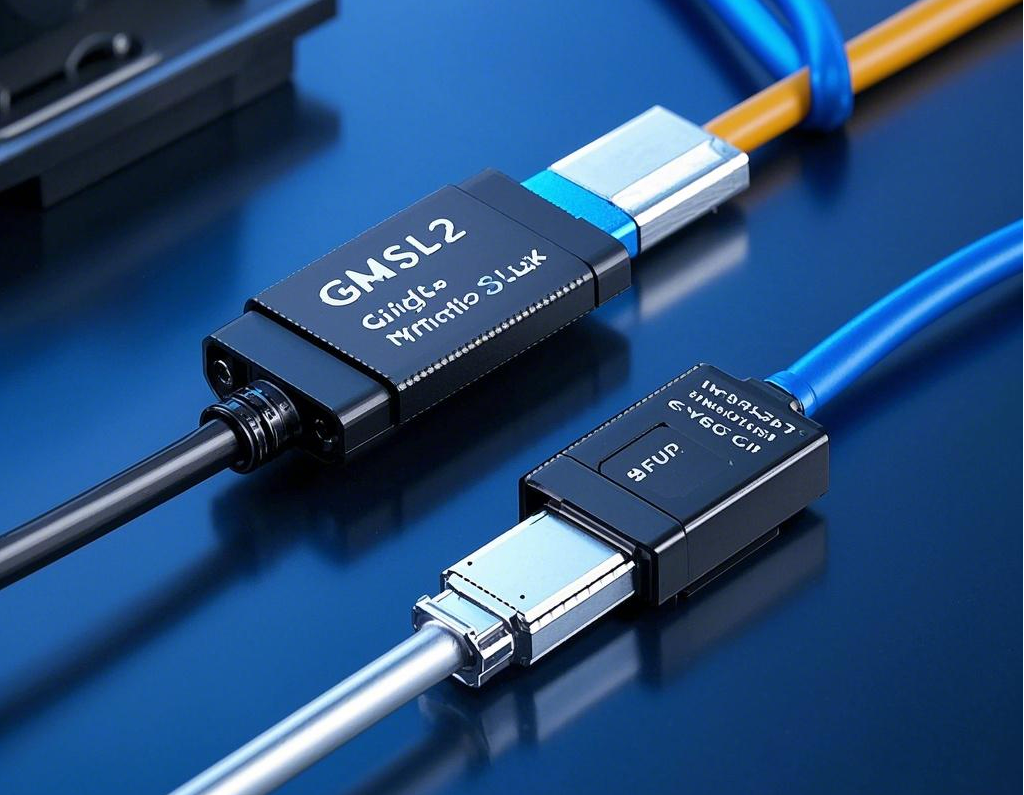
Ang mga camera ng GMSL2 ay gumagamit ng SerDes (Serializer / Deserializer) teknolohiya, kung saan ang serializer sa gilid ng transmitter ay responsable para sa pag-convert ng data sa isang serial stream, habang ang deserializer sa gilid ng tumatanggap ay nagbabago ng serial stream pabalik sa parallel data para sa Pinapayagan ng epektibong pamamaraan ng pagpapadala ng data ang GMSL2 camera na mapanatili ang mahusay na pagganap sa mahabang distansya at sa mataas na kapaligiran ng EMI, habang sa parehong oras, ang pagganap nito sa mga tuntunin ng elektromagnetikong pagkakapantay-pantay (EMC) ay nakakatugon sa mga pinakamakapang
Ano ang isang Ethernet camera?
Ang teknolohiya ng Ethernet camera, ang batong-pundok ng modernong komunikasyon sa network, ay kilala sa pagiging maaasahan at malawak na hanay ng mga application. Ang mga Ethernet camera ay nagpapadala ng mga imahe o stream ng video sa mga Ethernet cable, na maaaring maging Unshielded Twisted Pair (UTP) o Shielded Twisted
Ang isang nakaiiba na tampok ng mga Ethernet camera ay ang kanilang kakayahang magpadala ng data at kapangyarihan sa isang solong CATx Ethernet cable, salamat sa Power over Ethernet (PoE) na teknolohiya, na binabawasan ang pangangailangan para sa karagdagang mga cable ng kuryente sa pamamagitan ng paggamit ng hindi ginagamit na pares ng mga wire sa Ethernet cable upang magpadala ng data Nag-aalok ang teknolohiyang ito ng makabuluhang mga pakinabang sa mga tuntunin ng mga gastos sa pag-install at pagpapanatili, lalo na sa mga senaryo ng aplikasyon kung saan kinakailangan ang remote power.
Ang mga Ethernet camera ay karaniwang sumusunod sa pamantayan ng ONVIF, isang hanay ng mga protocol na bukas na pamantayan na nilikha ng industriya ng surveillance na tinitiyak ang interoperability sa pagitan ng mga camera at pagiging tugma sa mga network video recorder (NVRs). Bilang karagdagan, ang bawat Ethernet camera ay nilagyan ng isang chip ng pagproseso na kumpreso ng mga imahe / video habang nakuha o naitala upang maiwasan ang pagkonsumo ng masyadong maraming bandwidth, at pagkatapos ay nagpapadala ng mga kumpresong imahe / video sa network.
Ano ang Ethernet cable? Ano ang mga partikular na pag-uuri?
Ang Ethernet cable ay isang network cable na binubuo ng isang panlabas na jacket kung saan ang mga wire ng tanso ay naka-twist sa paligid ng isa't isa sa buong haba ng cable. Ito ay kategoryang alinman sa hindi naka-shield twisted pair (UTP) o naka-shield twisted pair (STP). Gaya ng ipinahihiwatig ng pangalan, ang mga cable na STP ay may taming sa loob ng panlabas na sako. Ang ganitong uri ng STP ay madalas na ginagamit sa mataas na kapaligiran ng electromagnetic interference (EMI) upang mabawasan ang pagkasira ng data.
|
Kategorya |
Ang bilis ng transmission (Max) |
Ang Distansya ng Pagpapadala |
Uri ng pagtakpan |
Bandwidth (Max) |
|
Katayuan 5e |
1Gbps |
100 metro |
Hindi nakatabi |
100MHz |
|
Katong 6 |
1Gbps |
100 metro |
Nakakataba/Hindi Nakakataba |
250MHz |
|
10Gbps |
55 metro |
|||
|
Katapusan 6a |
10Gbps |
55 metro |
Nakakapangit |
500MHz |
|
Cat 7 |
100Gbps |
15 metro |
Nakakapangit |
600MHz |
|
Katapusan 7a |
100Gbps |
15 metro |
Nakakapangit |
1,000MHz |
|
Katong 8 |
40Gbps |
30 metro |
Nakakapangit |
2,000MHz |
Ano ang Poe Technology?
Ang teknolohiya ng Power over Ethernet (PoE) ay isang makabagong solusyon na nagpapahintulot sa data at kapangyarihan na mag-isang ipasa sa isang solong Ethernet cable. Pinapadali nito ang mga kinakailangan sa pag-install at pag-cable para sa mga kagamitan. tungkol sa teknolohiya ng PoE tingnan ito .
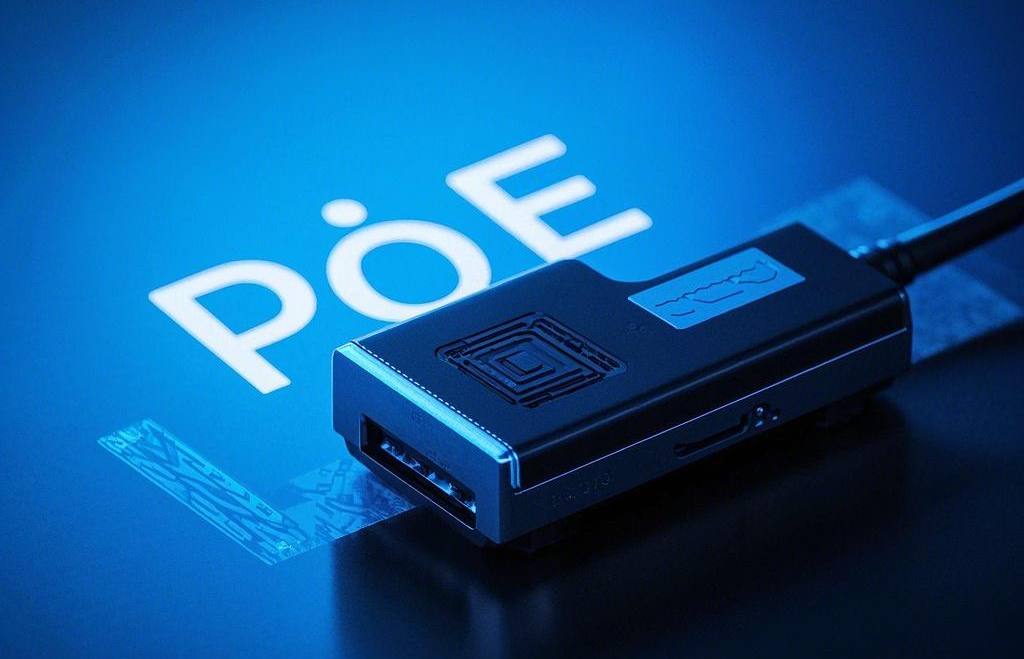
Ang iba't ibang mga pamantayan ng teknolohiya ng PoE, tulad ng IEEE 802.3af (PoE), IEEE 802.3at (PoE +), at IEEE 802.3bt (PoE ++), ay nagbibigay ng iba't ibang antas ng output ng kapangyarihan upang matugunan ang mga pangangailangan sa kuryente ng iba't ibang mga Halimbawa, ang pamantayan ng IEEE 802.3af ay nagbibigay ng hanggang sa 15.4 watts ng kapangyarihan, habang ang IEEE 802.3bt (PoE++) ay may kakayahang maghatid ng hanggang sa 90 watts ng kapangyarihan, na nagpapahintulot sa teknolohiya ng PoE na suportahan ang isang mas malawak na hanay ng mga aparato na mas
Ano ang mga pagkakaiba sa pagitan ng mga GMSL2 camera module at Ethernet camera module?
Parehong ang mga GMSL2 at Ethernet camera module ay nakakatugon sa lumalagong mga pangangailangan ng mga partikular na aplikasyon tulad ng mabilis na data rates, mataas na bandwidth, integridad at mas mahusay na EMI/EMC performance. Gayunman, ang GMSL2 imager ay mas advanced at ang pinakapili na pagpipilian para sa mga application ng naka-embed na pangitain na nangangailangan ng matinding bilis at pagganap. Narito ang isang pagtingin sa kung ano ang mga hiwalay na mga puwang na umiiral sa ilang mga tiyak na lugar.
- Ang Distansiya at Ang bilis
- EMI/EMC Performance Ang mga
- Gastos
Ang Distansiya at Ang bilis
Nagbibigay ang GMSL2 Camera module ng mahusay na kalidad ng imahe, bandwidth at mababang latency sa maikling distansya (mga 15 metro). Sa kabaligtaran, ang mga Ethernet Camera ay maaaring palawakin ang distansya ng paghahatid mula sa 100 metro hanggang sa mas mahabang distansya sa pamamagitan ng paggamit ng iba't ibang mga kategorya ng mga cable ng Ethernet, tulad ng Cat 5e, Cat 6, Cat 6a, atbp., depende sa kategorya at kalidad ng cable. Bilang karagdagan, sa pamamagitan ng paggamit ng teknolohiya ng PoE (Power over Ethernet), ang mga Ethernet camera module ay maaaring magpadala ng data at kapangyarihan sa pamamagitan ng isang solong cable nang hindi nangangailangan ng karagdagang mga cable ng kuryente. Mahalaga na tandaan na habang lumalaki ang distansya ng paghahatid, maaaring maapektuhan ang bilis. Halimbawa, ang mga extender ng PoE ay maaaring palawakin ang saklaw ng network hanggang sa 200 metro, o kahit hanggang sa 500 metro sa pamamagitan ng cascading, ngunit maaaring mabawasan nito ang bilis ng komunikasyon, mula sa 100 Mbps hanggang sa 10 Gbps.
EMI/EMC Performance Ang mga
Ang teknolohiya ng GMSL2 ay nagpapabuti sa EMI performance ng link sa pamamagitan ng built-in na programable output spread spectrum capability, na nag-aalis ng pangangailangan para sa karagdagang spread spectrum clocking. Bilang karagdagan, ang GMSL2 serializer ay nilagyan ng isang High Immunity Mode (HIM) upang higit pang mapabuti ang pag-iwas ng control channel para sa electromagnetic compatibility (EMC). Sa kaibahan, ang teknolohiya ng Ethernet ay karaniwang gumagamit ng Shielded Twisted Pair (STP) na mga cable, na nagbibigay ng isang antas ng kaligtasan na tumutulong upang mabawasan ang electromagnetic interference sa panahon ng paghahatid ng data. Gayunpaman, ang mga Ethernet camera ay maaaring hindi kasing mataas sa mga tuntunin ng EMI/EMC performance kumpara sa mga GMSL2 camera, lalo na sa mataas na mga kapaligiran ng EMI.
Gastos
Ang mga Ethernet Camera ay mas mura sa mga bagong pag-install. Ito ay dahil ang mga Ethernet camera ay maaaring gumamit ng umiiral na imprastraktura ng network, na binabawasan ang pagiging kumplikado at gastos sa pag-cable. At sa teknolohiya ng Power over Ethernet (PoE), posible rin na magpadala ng parehong data at kapangyarihan sa pamamagitan ng isang solong cable, na lalo pang binabawasan ang pangangailangan para sa karagdagang mga cable ng kuryente. Hindi lamang ito nag-iimbak sa mga gastos sa materyal, kundi binabawasan din ang oras ng pag-install at mga gastos sa manggagawa.
Ang mga GMSL2 Camera, sa kabila ng kanilang mga pakinabang sa pagganap, ay medyo mahal na i-install. Ito ay higit sa lahat dahil sa katotohanan na ang mga GMSL2 Camera ay nangangailangan ng paggamit ng mga espesyal na coaxial cable at karagdagang mga cable ng kuryente, na nagreresulta sa mas mataas na wiring at kumplikadong pag-install. Subalit ang pangmatagalang mga benepisyo sa ilang mga application na high-end ay maaaring makabawi sa unang gastos kung ito ay.
Teknolohiya ng GMSL at mga hinaharap na uso sa mga Ethernet camera module
Ang teknolohiya ng GMSL3, ang pinakabagong pagsulong, ay nag-aalok ng mas mataas na bilis ng paglipat ng data, sumusuporta sa mga rate ng paghahatid ng hanggang sa 12 Gbps at ang kakayahang magpadala ng mataas na frame rate 4K video (hal. 90 fps) sa distansya ng higit sa 14 m. Sinusuportahan din ng GMSL3 interface ang mga mode ng backward compatibility, nangangahulugang ang mga bahagi nito ay maaaring gumana sa GMSL2 mode, na nagbibigay ng kakayahang umangkop para sa pag-upgrade ng mga umiiral na sistema.
Habang ang teknolohiya ng Ethernet Camera module ay nag-unlad sa parehong Single Pair Ethernet (SPE) at Advanced Physical Layer (APL), pinalawak ng SPE ang haba ng mga cable ng Ethernet na may data at kapangyarihan sa pamamagitan ng paggamit lamang ng isang pares ng twisted pairs. APL, bilang Enhanced Physical Layer ng Ang mga pag-unlad na ito ay nagpapahiwatig ng magandang paggamit ng teknolohiya ng Ethernet sa hinaharap na Industrial Internet of Things (IIoT) at mga proyekto ng matalinong lungsod.
Sinoseen camera module para sa GMSL at Ethernet teknolohiya
Sinoseen, bilang isang mahusay na itinatag Tagapagtala ng modulong kamera mula sa Tsina may higit sa isang dekada na karanasan sa naka-embed na larangan ng paningin, nag-aalok ng isang serye ng mga module ng camera ng GMSL at GigE. Kung interesado ka dito, maaari kang pumunta sa aming listahan ng produkto ng module ng camera upang suriin ito, bukod sa mga module ng camera ng GMSL at GigE, mayroon ding iba pang mga module ng camera tulad ng PoE, MIPI, DVP, tof, atbp para sa iyo upang suriin pumili. Mga Module ng Kamera Siyempre, kung mayroon kang anumang mga katanungan, mangyaring huwag mag-atubiling makipag-ugnayan sa amin.
Mga Inirerekomendang Produkto
Balitang Mainit
-
China nangungunang mga tagagawa ng camera module powering device photographysinoseen
2024-03-27
-
Ang pangwakas na gabay sa pagpapasadya para sa mga module ng camera ng OEM
2024-03-27
-
Malalim na pag-unawa sa mga module ng camera
2024-03-27
-
Paano ba binabawasan ang resolution ng camera module?
2024-12-18

 EN
EN
 AR
AR
 DA
DA
 NL
NL
 FI
FI
 FR
FR
 DE
DE
 EL
EL
 HI
HI
 IT
IT
 JA
JA
 KO
KO
 NO
NO
 PL
PL
 PT
PT
 RO
RO
 RU
RU
 ES
ES
 SV
SV
 TL
TL
 IW
IW
 ID
ID
 SR
SR
 VI
VI
 HU
HU
 TH
TH
 TR
TR
 FA
FA
 MS
MS
 IS
IS
 AZ
AZ
 UR
UR
 BN
BN
 HA
HA
 LO
LO
 MR
MR
 MN
MN
 PA
PA
 MY
MY
 SD
SD

